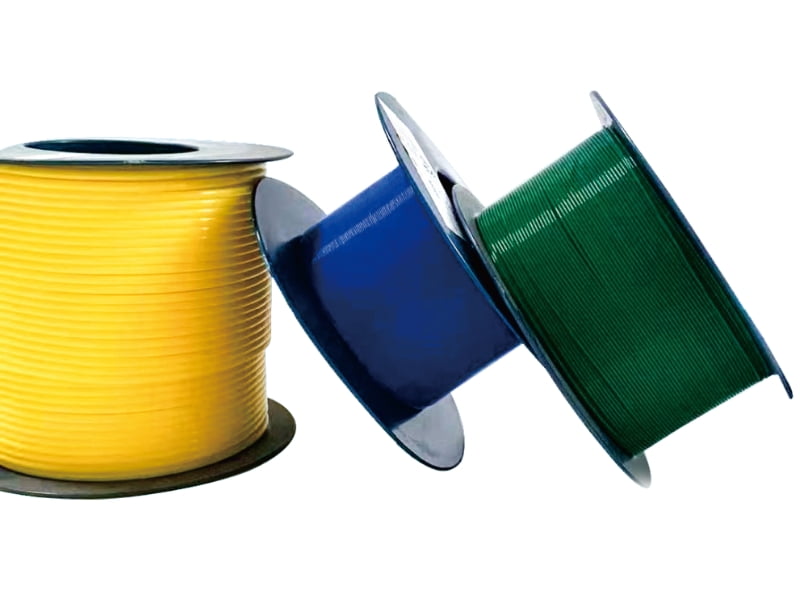что такое ПТФЭ-трубка?
Трубка из политетрафторэтилена (ПТФЭ) — это фторполимерная трубка, известная своей исключительной химической стойкостью, термостойкостью и низкими характеристиками трения. Трубки из ПТФЭ изготавливаются методом экструзии из высокочистых смол ПТФЭ, в результате чего получаются полупрозрачные или непрозрачные белые трубки с гладкой поверхностью. Уникальная молекулярная структура материала, состоящая из атомов углерода, окруженных атомами фтора, делает его одним из самых химически инертных материалов.

Основные характеристики трубок из ПТФЭ включают в себя:
химическая стойкость: устойчив практически ко всем химикатам, за исключением расплавленных щелочных металлов и фтора при высоких температурах (совместим с >95% промышленных химикатов)
диапазон температур: -200°C до +260°C (-328°F до +500°F) постоянная рабочая температура
электрическая прочность диэлектрика: 19,7 кВ/мм (500 В/мил) для стандартной толщины стенки
коэффициент трения: 0,05-0,10 (один из самых низких показателей среди всех твердых материалов)
предел прочности: 20–35 МПа (2900–5000 фунтов на кв. дюйм) в зависимости от рецептуры
удлинение при разрыве: 200-400%
водопоглощение: <0.01% (24h immersion)
surface energy: 18.5 dynes/cm (extremely non-stick)
applications of ptfe tubing
the unique combination of properties makes ptfe tubing suitable for demanding applications across multiple industries:
chemical processing
ptfe tubes serve as liners or transfer lines for aggressive chemicals including concentrated acids (96% sulfuric acid, 37% hydrochloric acid), strong bases (50% sodium hydroxide), and organic solvents (acetone, toluene). their 0% permeability to most chemicals prevents contamination.
semiconductor manufacturing
in cleanroom environments, ultra-high purity ptfe tubing (with <0.1 ppb metallic impurities) transports high-purity chemicals and gases. the material's outgassing rate of <1×10⁻⁹ torr·l/s·cm² makes it ideal for vacuum systems.
medical and pharmaceutical
medical-grade ptfe tubing (usp class vi compliant) is used in catheters, drug delivery systems, and bioprocessing equipment. its non-thrombogenic surface reduces platelet adhesion by 90% compared to other polymers.
automotive and aerospace
ptfe fuel lines withstand ethanol-blended fuels and maintain flexibility at -40°c. in aircraft, ptfe tubing is used in hydraulic systems (withstanding 3000 psi at 200°c).
electrical insulation
ptfe tubing provides volume resistivity >10¹⁸ Ω·cm for high-voltage applications. its dielectric constant of 2.1 remains stable from -40°c to 260°c.
maintenance and care of ptfe tubes
proper maintenance extends ptfe tubing lifespan beyond its typical 10-15 year service life in most applications:
cleaning procedures
for chemical contamination:
immerse in 10% nitric acid solution at 60°c for 30 minutes
rinse with deionized water (18 mΩ·cm resistivity)
dry with nitrogen gas (99.999% purity) at 80°c
for particulate contamination:
ultrasonic clean in isopropyl alcohol (ipa) at 40 khz for 10 minutes
purge with filtered compressed air (0.1 μm filtration)
installation best practices
maintain bend radius >5×od to prevent kinking
use ptfe-compatible fittings (316l stainless steel or peek)
avoid axial loads >50 n during assembly
storage conditions
store at 15-25°c in 40-60% rh
protect from uv exposure (causes <0.1% degradation/year)
keep in original packaging until use to prevent surface contamination
performance monitoring
regularly inspect for:
wall thickness reduction (>10% decrease indicates replacement)
surface cracks (use 10× magnification)
changes in flexibility (test at -20°c for critical applications)



 English
English

